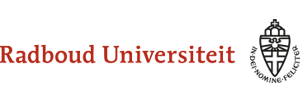American English Phonetics
Another American English Faculty Project
8.7.3 Liaision
There is a third syllabification rule which, unlike MOP and WSP, applies across word-boundaries. It is LIAISON, which says: add the last consonant of a word to the onset of a vowel-initial syllable. Note that any vowel to which LIAISON applies will invariably be word-initial, since all other vowels will already have been assigned an onset by MOP.
The rule will cause five eggs to have the syllable structure /(ˈfaɪ(v)ɛgz)/, with /v/ ambisyllabic. Notice that the second syllable sounds like /vɛgz/, not like [v…ʔɛgz], as Dutch learners often pronounce it. In Dutch, no rule like LIAISON exists, and vowel-initial words are normally preceded by glottal stops, as in Oom Otto irriteerde Ans ook erg. Obviously, LIAISON applies in fluent, connected speech only.
Here are some sentences to test your understanding of GA syllable structure. Transcribe them, and indicate the syllabification as given by MOP, WSP and LIAISON, as has been done for the first sentence.
- She felt quite at ease.
/(ʃi) (fɛlt) (kwaɪ(t)ə(t)iːz)/
- Kate ate all eggs.
- Mary, my late ex, hated acrobatics.
- We later coated all walls with latex.
- I live in Oregon.
